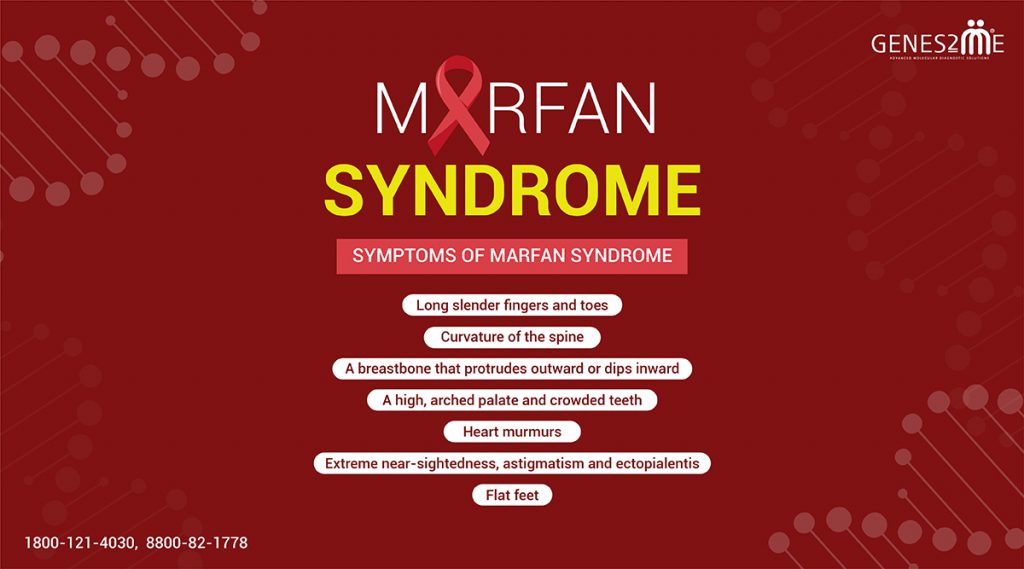February is Marfan Awareness Month

MARFAN SYNDROME
February is Marfan awareness month. It is estimated that 1 in 5000 people are affected by Marfan syndrome worldwide. It is an inherited disorder that affects the connective tissue.
What are the symptoms of Marfan syndrome?
Marfan syndrome affects different people in different ways. People may have mild or aggressive symptoms and these symptoms can either be presented during early age or may progress as person ages. As connective tissue is present all around our body so many parts of the body can be involved, most commonly affecting the eyes, skeleton, heart and blood vessels. People with Marfan syndrome are usually very tall, thin and loosely jointed. Their arm span is greater than their body height. Other common symptoms include:
- Long slender fingers and toes
- Curvature of the spine
- A breastbone that protrudes outward or dips inward
- A high, arched palate and crowded teeth
- Heart murmurs
- Extreme near-sightedness, astigmatism (error in the shape of cornea) and ectopia lentis (dislocated lens of the eye-often the first sign of Marfan syndrome)
- Flat Feet
Is it always inheritable?
Marfan Syndrome is caused by defect or mutation in the fibrillin-1 (FBN1)gene. This gene in usually determines the structure of a protein that is an important part of the connective tissue. This defective gene may be inherited or may be a result of random error during conception.
Approximately 75% of individuals with Marfan syndrome have a parent who also has the same condition (inherited); whereas 25% of individuals have the condition as a result of a new (de novo) mutation. When one of the parents has Marfan syndrome, each of his or her children has a 50% chance to inherit the FBN1 gene (autosomal dominant inheritance).

Diagnosis and Treatment
Marfan syndrome usually requires a treatment plan according to the severity and needs of the affected person.
Some symptoms related to heart, blood vessels, bones or joints can worsen over time and lead to life threatening complications. Hence it is important to receive accurate, early diagnosis and treatment.
The doctor specialized in connective tissue disorder or clinical geneticist may require multitude of information including complete family history, information about affected family member or member who had an early, unexplained heart-related death and thorough physical evaluation.
It is especially difficult when the affected person has overlapping symptoms with Marfan like disorders including Loeys-Dietz syndrome, Homocystinuria, Beals syndrome and many more. Such cases require special criteria for clinical diagnosis.
Often the first test advised to people with Marfan syndrome would be an echocardiogram (ECG) to check the condition of heart valves and size of aorta. Regular eye examination is also important. Annual evaluation of the skeletal system is necessary especially during the times of rapid growth, adolescence.
Genetic Testing with genes2Me
Genetic testing is often used to confirm or rule out the diagnosis of Marfan syndrome. If a mutation is found in the FBN1 gene, family members can also be tested to know if they are also affected. Genetic testing must be followed with proper genetic counseling.
Genes2Me offers a varied range of genetic testing including Exome Sequencing, Sanger Sequencing for the identification of Marfan syndrome and related disorders.
